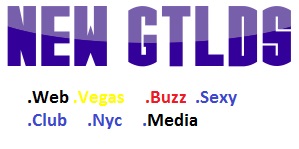
Many try to talk about the new gtlds in very simplistic terms, naysayers just want to group them altogether and say they suck, failed, are dead. Proponents want to say they are the future, give them time, .com is AM radio.
I would argue the new gtlds are a much more complicated animal. There are many things to look at in both the short and long term. This is the first chapter of a new series looking at the new gtlds.
All fault starts with ICANN
When we start discussing the new gtlds we need to start with ICANN. It was June 2011 when ICANN announced the following:
Singapore | ICANN‘s Board of Directors has approved a plan to usher in one of the biggest changes ever to the Internet’s Domain Name System. The Board vote was 13 approving, 1 opposed, and 2 abstaining.
During a special meeting, the Board approved a plan to dramatically increase the number of Internet domain name endings — called generic top-level domains (gTLDs) — from the current 22, which includes such familiar domains as .com, .org and .net.
“ICANN has opened the Internet’s naming system to unleash the global human imagination. Today’s decision respects the rights of groups to create new Top Level Domains in any language or script. We hope this allows the domain name system to better serve all of mankind,” said Rod Beckstrom, President and Chief Executive Officer of ICANN.
New gTLDs will change the way people find information on the Internet and how businesses plan and structure their online presence. Internet address names will be able to end with almost any word in any language, offering organizations around the world the opportunity to market their brand, products, community or cause in new and innovative ways.
“Today’s decision will usher in a new Internet age,” said Peter Dengate Thrush, Chairman of ICANN‘s Board of Directors. “We have provided a platform for the next generation of creativity and inspiration.”
The decision to proceed with the gTLD program follows many years of discussion, debate and deliberation with the Internet community, business groups and governments. The Applicant Guidebook, a rulebook explaining how to apply for a new gTLD, went through seven significant revisions to incorporate more than 1,000 comments from the public. Strong efforts were made to address the concerns of all interested parties, and to ensure that the security, stability and resiliency of the Internet are not compromised.
ICANN will soon begin a global campaign to tell the world about this dramatic change in Internet names and to raise awareness of the opportunities afforded by new gTLDs. Applications for new gTLDs will be accepted from 12 January 2012 to 12 April 2012.
ICANN made several mistakes in creating the chaos that is the new gtld program.
Price Caps
Not implementing price caps was a big mistake on the part of ICANN, they certainly could have done this if they wanted to. Are we to believe no one would apply for an extension unless they had infinite pricing power ?
Quantity
There certainly should have been a much smaller number of non brand specific new extensions. ICANN should have realized the confusion and chaos that flooding the net with so many new extensions would bring.
Singular vs Plural
ICANN certainly should have mandated one or the other. They could have told all participants interested in certain strings that only the version with the highest number of applicants would go into the root.
In the next chapter we will look at the applicants.
This latest Domain News has been posted from here: Source Link
